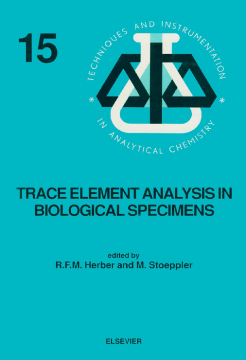
Additional Information
Book Details
Abstract
The major theme of this book is analytical approaches to trace metal and speciation analysis in biological specimens. The emphasis is on the reliable determination of a number of toxicologically and environmentally important metals. It is essentially a handbook based on the practical experience of each individual author. The scope ranges from sampling and sample preparation to the application of various modern and well-documented methods, including quality assessment and control and statistical treatment of data. Practical advice on avoiding sample contamination is included.
In the first part, the reader is offered an introduction into the basic principles and methods, starting with sampling, sample storage and sample treatment, with the emphasis on sample decomposition. This is followed by a description of the potential of atomic absorption spectrometry, atomic emission spectrometry, voltammetry, neutron activation analysis, isotope dilution analysis, and the possibilities for metal speciation in biological specimens. Quality control and all approaches to achieve reliable data are treated in chapters about interlaboratory and intralaboratory surveys and reference methods, reference materials and statistics and data evaluation.
The chapters of the second part provide detailed information on the analysis of thirteen trace metals in the most important biological specimens. The following metals are treated in great detail: Aluminium, arsenic, cadmium, chromium, copper, lead, selenium, manganese, nickel, mercury, thallium, vanadium and zinc.
The book will serve as a valuable aid for practical analysis in biomedical laboratories and for researchers involved with trace metal and species analysis in clinical, biochemical and environmental research.
If you are engaged in the trace element analysis of human biological specimens, such as blood, urine, teeth, bone, hair, nails and soft tissues, then this is the reference text for you!
The Analyst
